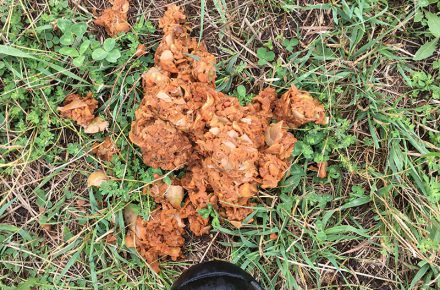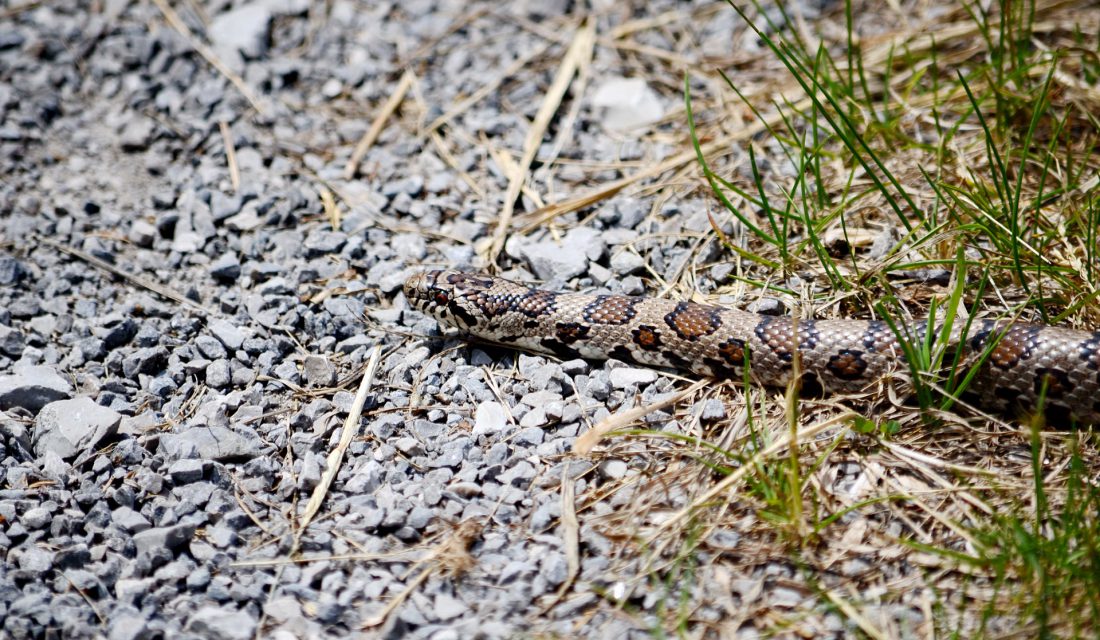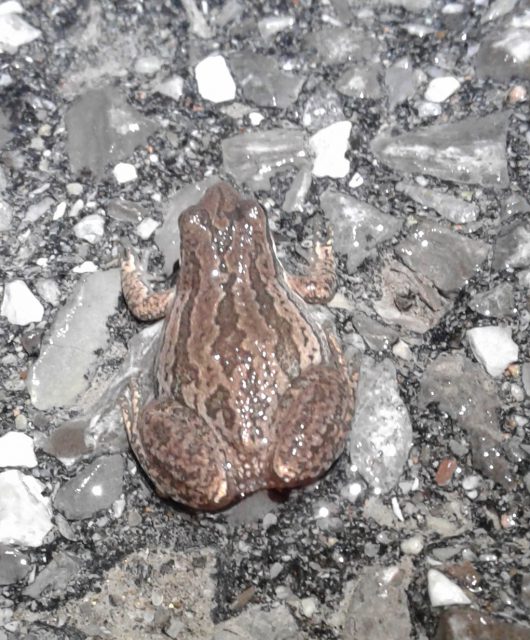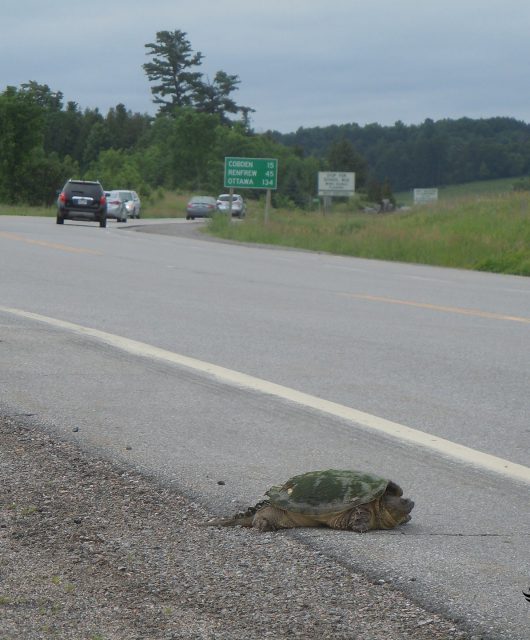The spring and summer are always a special time on our hobby farm.
Nesting birds, nesting snapping turtles, night air full of frog calls, duck families and a Great Blue Heron on the pond, and on moonlit nights, a visiting Whip-poor-will singing near the house. It is a time replete with biodiversity.
Bearing a Mystery
A few weeks ago, I saw two unusually large holes that had been dug near the house — each about the circumference and about one-third of the depth of a bucket. These holes were too large to have been dug by a skunk. I found nothing of note in the first hole. In the second hole, however, there were several hornets milling around at the bottom of the hole. A bit of apple tree root was exposed.
At first, I wondered if the root had attracted the interest of the wasps. After more careful observation I noticed that the hornets were coming and going from a small hole under the root.
Aha!
The animal that dug the hole had likely been trying to access the larvae of the hornets. I now had a guess on the species of mammal that had dug the hole, and two more clues were provided subsequently in the form of a loud crashing in the woods and then a fair-sized scat with bits of apple in it.

If I hadn’t yet strung the clues together, my dogs helped the following day when they flushed a small Black Bear. Given that no Mama bear was in sight, I thought it may be the first year this bear was making its way in the world on its own.
Spilt Milk
While doing chores in the paddock last weekend, I was surprised by a very special creature. I had moved two loads of sand with the tractor, had just begun to level the sand with a rake when the head of an Eastern Milk Snake popped up out of the sand. It reared its head back in a threatening pose.

I was nonplussed by the snake’s attitude. Milk snake are harmless, but they can put on a bluff aggression with gusto. I was more concerned about the well-being of the snake, given that it had just been scooped up by a tractor. It didn’t appear to be injured. I used a shovel to gently pry the sand loose from under its body. When its full body emerged, I saw that it was an adult, about 30 centimetres long.
It exited the paddock with as much grace as it could muster. I was quite relieved I had not injured this animal, which is listed as an at-risk species in Canada.
Farms Can Help Conserve At-risk Wildlife
Farms in Canada provide habitat for many species, including many species at risk. Farmers who are good stewards should be recognized for their work in sustaining biodiversity. Their work is a public good from which we all benefit. Agriculture and Agri-food Canada is now penning the Green Agriculture Plan, which is designed to have a long term view of environmentally-sustainable farming. I am hopeful that rewards for good stewardship of species and the land is built into this new policy.



